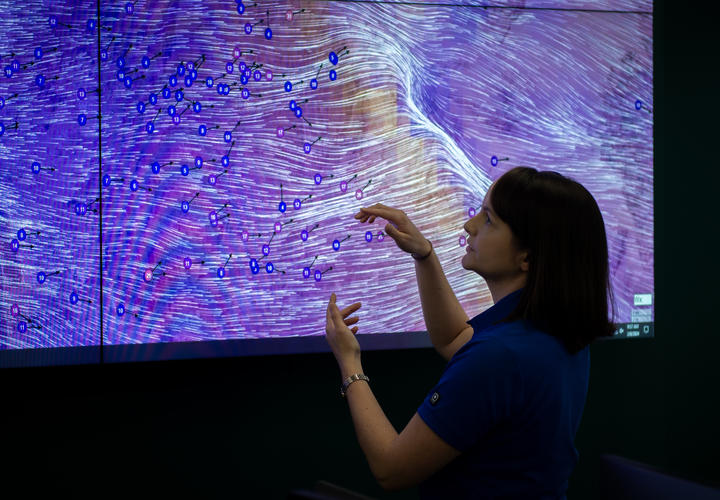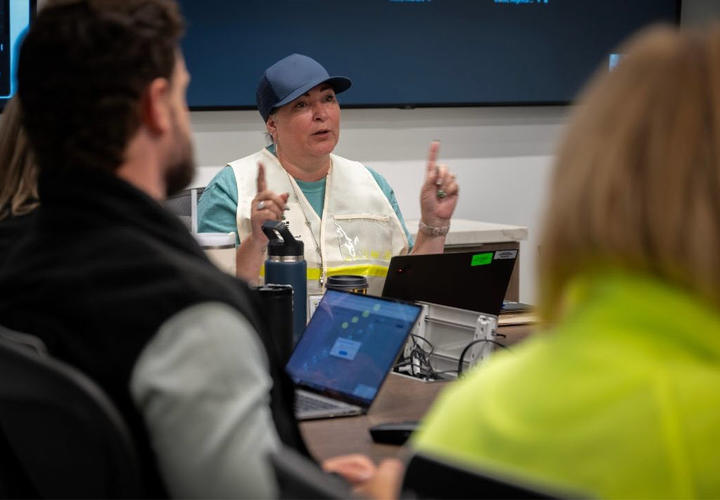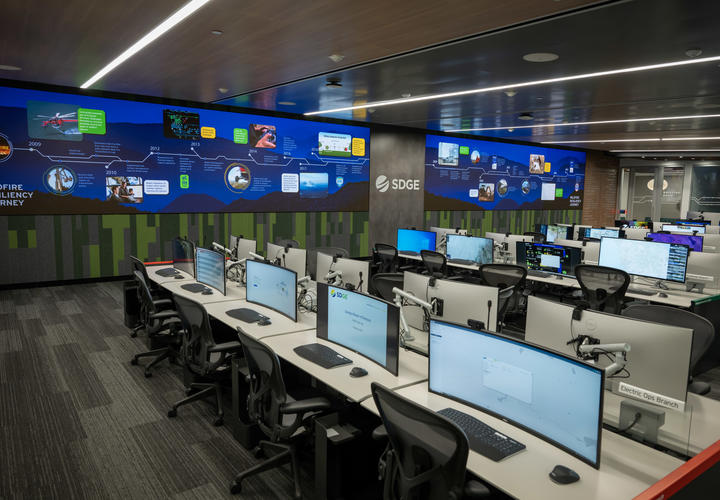As the operating environment for utilities becomes more challenging, San Diego Gas & Electric (SDG&E) is stepping up to lead the energy sector in climate preparedness. The company has unveiled its updated cutting-edge Wildfire and Climate Resilience Center (WCRC), innovating in wildfire mitigation and grid safety.
The WCRC is the latest innovation in the company’s commitment to building an electrical grid designed to withstand the intensifying effects of climate change. One of the most technologically advanced in the industry, the Center serves as a hub for research, development and implementation of innovative solutions by bringing AI and predictive modeling together with shared technology and intelligence with emergency responders to help enable a swift and integrated response to regional threats. The combination of extensive data and advanced modeling also contributes to improved energy affordability by enabling cost-efficient decision-making that helps reduce risk at a lower cost for customers.
“Our commitment goes beyond reacting to climate challenges. We are focused on anticipating and preparing for them,” said Caroline Winn, SDG&E’s Chief Executive Officer.
“By leveraging strategic investments, collaborations and community engagement, SDG&E is building the industry-leading platform to support a more sustainable, resilient energy grid that is better prepared to meet the challenges of today and tomorrow."
The company’s Wildfire and Climate Resilience Center is a centralized focal point of SDG&E’s climate resilience strategy:
- Advanced weather monitoring: SDG&E operates one of the nation’s most sophisticated weather forecasting networks, offering real-time data to better anticipate and address weather-related threats. The company’s systems use millions of historical weather data points going back to 2010 to assist in training AI-based wind forecasting models, including one of the first AI-trained Santa Ana Wind Gust forecast models in the industry.
- AI and machine learning: These cutting-edge technologies can help predict and mitigate wildfire impacts on the energy grid. For example, SDG&E conducts more than 10 million virtual wildfire simulations daily to inform operational wildfire risk models, and uses more than 3.8 million drone images of company infrastructure to train AI-based inspection models.
- Partnerships with academia: SDG&E partners with leading academic institutions such as Scripps Institution of Oceanography’s Center for Western Weather and Water Extremes, San Jose State University, San Diego Supercomputer Center and the University of Wisconsin-Madison Space Science and Engineering Center to develop weather products to better anticipate extreme events, visualize and share weather and fuel moisture data, analyze fire potential and detect wildfires using real-time satellite data.
- Community collaboration: SDG&E works closely with local communities and stakeholders to achieve more inclusive and effective climate resilience efforts.
- Fire-resistant infrastructure: The company continues to invest in fire-hardened systems, including undergrounding, steel poles, and vegetation management, that aim to reduce wildfire risk.
- Workforce training: Extensive training programs are equipping SDG&E’s workforce to manage and maintain a resilient grid.

The center fosters collaboration with regional safety partners, government agencies and local communities, forging a united front against wildfires and emergencies.
The establishment of the WCRC underscores SDG&E’s leadership in climate resiliency. The center serves as a hub for research, development and implementation of innovative solutions designed to enhance grid reliability and safety. One unique component of the WCRC is its crucial role in educating and training the next generation of energy professionals in climate resilience. It also serves as the company’s Emergency Operations Center (EOC) during extreme weather and major disasters. The new EOC replaces SDG&E’s original facility and is designed to accommodate response to all hazards and emergencies, fusing advanced technologies, communication tools, and public safety partner coordination with regional agencies to further enhance employee and public safety.
“As a region, our community is facing hotter heat waves, longer droughts, and stronger wildfires that requires a level of emergency preparedness and response by both public and private partnerships,” said Tony Mecham, CALFIRE San Diego Unit Chief. “Investments like this new emergency operations center are vital public safety investments that will help protect the region, our communities and our future.”


The WCRC serves as a centralized focal point SDG&E’s Wildfire and Climate Science division, which consists of the Wildfire Mitigation, Emergency Management, and Fire Science and Climate Adaptation. To foster continual innovation and enhancements to SDG&E’s already leading-edge approach to climate adaptation, the space includes two climate science lab settings and a new Resilience Zone designed to engage and educate local youth by providing the knowledge and tools they need to stay safe and resilient. Using this new space, SDG&E will continue to leverage and develop partnerships with academia and community partners to advance and share wildfire and climate science to support safe and reliable operations in an electrified future.
This center will empower the community, our youth, local agencies and organizations to work together to address climate-related challenges and strengthen wildfire resilience and personal safety.
To learn more about SDG&E’s commitment to wildfire safety for the benefit of its customers, visit sdge.com/wildfire-safety.